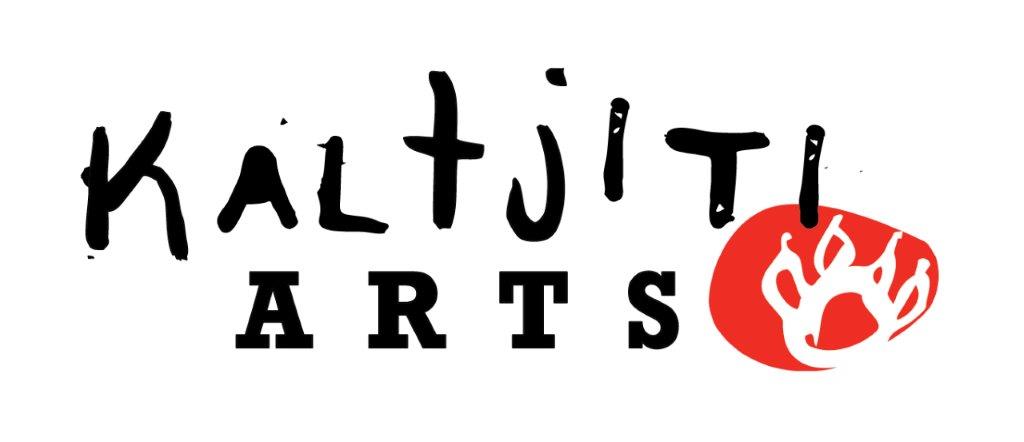Below are a few of the Tjukurpa stories, as told by the artists in their longer versions.
Kungkarangkalpa - Seven Sisters Story
APY Lands Women’s Collaborative, Kungkarangkalpa - Seven Sisters 2016, acrylic on canvas, 300 x 480 cm. © The artists and APY Art Centre Hub, image courtesy Silversalt Photography
Kungkarangkalpa - Seven Sisters
Kungkarrakalpa or Minyma Tjuta (Seven Sisters) Tjukurpa is a narrative that traverses the landscape across the desert regions belonging to Anangu people, ending in the formation of the constellations of Pleiades and Orion. It is a story told, sung and danced particularly in women's inma (ceremony).
Artists from Tjala Arts, Amata, describe the story:
'The sisters are the constellation of Pleiades and the other star Orion is said to be Nyiru or Nyirunya (described as a lusty or bad man). Nyiru is forever chasing the sisters known as the Kunkarunkara women as it is said he wants to marry the eldest sister.The seven sisters travel again and again from the sky to the earth to escape Nyiru’s unwanted attentions. They turn into their human form to escape from the persistent Nyiru, but he always finds them and they flee back to the sky.
As Nyiru is chasing the sisters he tries to catch them by using magic to turn into the most tempting kampurarpra (bush tomatoes) for the sisters to eat and the most beautiful Ili (fig) tree for them to camp under. However, the sisters are too clever for Nyiru and outwit him as they are knowledgeable about his magic. They go hungry and run through the night rather than be caught by Nyiru. Every now and again one of the women fall victim to his ways. It is said that he eventually captures the youngest sister, but with the help of the oldest sister, she escapes back to her sisters who are waiting for her. Eventually the sisters fly back into the sky to escape Nyiru, reforming the constellation.'
Wanampi Tjukurpa - Water Snake Creation Story
Kunmanara (Tiger) Palpatja Wanampi Tjukurpa 2009, synthetic polymer paint on linen, 198.0 x 152.5 cm, National Gallery of Australia, Canberra, Donated through the Australian Government’s Cultural Gifts Program by Susan and Michael Armitage, 2013. © the artists and tjala Arts
Land and surrounds of Piltati, west of Amata, hold the sites of the Wanampi Tjukurpa, a narrative outlining the conflict between two brothers (wati kutjara) and their wives (minyma kutjara), and the creation of an important water source in the area. Kunmanara (Tiger) Palpatja was a senior Anangu law man and a custodian of this Tjukurpa. The story goes something like this:
'This story tells of two Snake brothers and their wives, who are sisters that lived near Piltati, west of Amata. Every day the women went out hunting, and every evening they bought home kuka (meat for cooking) for the men, who didn’t do anything but perform ceremonies. After a while the sisters became annoyed at the men’s laziness and decided to eat all the food they caught, leaving the men to fend for themselves.
The Snake brothers were angry, and decided to punish the women for their insubordination. After lots of talking, the brothers agreed to change themselves into a Wanampi (a giant mythical water serpent, which also had the power to travel above and below ground) and play a practical joke upon the women that would cause them a great deal of hard useless labour.
They went to a marsupial rat hole where the women had been digging and imitated the tracks of a large snake by rubbing the back of a spear thrower on the ground. Then they entered the hole, and one of them let out enough of his tail for the women to see. The younger sister became very excited when she saw the tracks of such a large snake and its tail popping out. She begun to pull the snake from its burrow, but the tail kept slipping from her grasp. The Wanampi teased the younger sister by allowing himself to be dragged out a few feet before wriggling himself free. Again and again he let himself be caught before wriggling free once more.
Eventually the younger sister became tired, gave up and returned to her sister. In evening, when they were eating dinner, the younger sister told her elder sister how she had almost caught a carpet snake as big as a Wanampi, but couldn’t pull it from its burrow as it was too strong. The big sister said she would help her to catch it the next day. The next morning the women set off with their wana (digging sticks) and piti (large wooden bowl). They dug all day long, then the next day and the next, occasionally glimpsing the snake. Sometimes they caught a small carpet snake enough for their evening meal. The small carpet snakes were created by the Snake men so the women wouldn’t lose heart or grow hungry. They continued to dig after the Wanampi, but they never caught him. In their pursuit the women dug a trench from Aparatjara to Piltati, now a watercourse, approximately 25km long. Their burrow became deeper, and the women dug many subsidiary branches in their pursuit, creating the gorge at Piltati, with its creeks and piles of rock that clutter the valley floor.
Finally the elder sister changed her tactics. She dug a pit ahead of the entrance to the burrow (now the largest rock hole at Piltati), uncovering the Wanampi before he could get away. She was so frightened by his huge coils slithering around her feet that she threw her digging stick, piercing the side of the Wanampi. The younger Wanampi left the burrow, chased and swallowed his wife, the younger sister. The injured snake (big brother) was angry and in great pain, so he caught, killed and ate the elder sister at the mouth of Piltati gorge. The big brother Wanampi is now a bloodwood tree with a dry limb sticking out at one side, and the trunk is covered with lumps and excrescences. The dead limb is the digging stick with which the snake is speared; the lumps and excrescences are the body of the woman still showing through the skin of the snake.'
Ngintaka Tjukurpa - Perentie Lizard Man Creation Story
Harry Tjutjuna Wati Ngintaka, Wati Nyiru, Wanka and Kungka Tjuta 2009, acrylic on linen, 202 x 264 cm, Araluen Art Collection, acquired from Desert Mob 2009. Courtesy the artist and Ninuku Arts
Ngintaka Tjukurpa is the creation story and law of the ancestral Perentie Lizard Man (Wati Ngintaka) and traverses the APY Lands as a songline, or trajectory that follows the tracks of ancestral creation being. A story shared between many Anangu across the Western Desert, it follows the movement of Wati Ngintaka as he listens and searches to find his stolen tjiwa (grinding stone) and return it to his traditional country.
Starting in his camp at Atarangu near Irrunytju (Wingellina), the Ngintaka songline moves far east towards Walyatjara (Wallatinna) (where Wati Ngintaka reclaims the grinding stone), then travelling in short bursts (pursued by his relatives who are confused by the many lizard tracks) in an northern arc back through several important sites ending in Arannga.
Artist Harry Tjutjuna tells part of the story in his large complex work, Wati Ngintaka, Wati Nyiru, Wanka: Spider and Kungka Tjuta, 2009, which incorporates his four major stories and painting themes
'This is Wati Ngintaka Tjurkurpa (perentie lizard man creation story). That Wati Ngintaka heard from a long way the sound of a beautiful grinding stone. He wanted that stone for himself, so he travelled from Arang’nga a long way east towards on to Wayatina. He saw Anangu tjuta (lots of Aboriginal people) at the camp. There some people gave him mai, a seed cake, but it was dry and he didn't like it. Then one lady gave him food and it was delicious and he knew that the seeds were ground on the grinding stone he had heard. He spied the grinding stone and stole it, hiding it in under his tail. When they all went hunting the next day he stayed in camp saying he had sore feet. Once they were gone he started travelling back with the grinding stone. All the people were angry with the Wati Ngintaka and chased him. When they caught him they felt all over for the grinding stone, but couldn't find it. That Wati Ngintaka held up his arms and claimed he didn't have it, but was hiding it, wipungka (in his tail). They cut the Wati Ngintaka up into pieces. That place where he finished is Aran’nga in the NT. Ngaltutjara (poor thing).'























